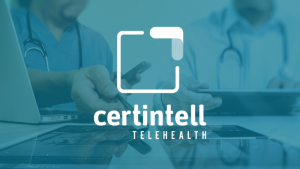It can be hard to maintain or improve physical health when our mental health is threatened. Feelings of loneliness are a mental condition that can also lead to physical conditions, such as sleeping problems, stomach pain or headaches, or they can exacerbate current chronic conditions.¹ Additionally, social isolation can lead to higher rates of mortality, depression and cognitive decline. For seniors, loneliness is unfortunately a common battle. Fortunately, researchers have found telehealth is one way of administering care that also decreases feelings of social isolation and prevents a domino effect on patient health. Given the shortage of providers needed for an ever-growing senior population, telehealth can also be an innovative way to maximize resources while still providing quality care.
The Effects of Loneliness
Not only can social isolation lead to exacerbating conditions, it can also increase medical spending in more ways than one.
In 2017, CMS spent an average of $1,608 more a year for each older Medicare beneficiary who had limited social connections compared to those who were more socially active. This culminated to an estimated $6.7 billion in increased Medicare spending per year.1
The same study exploring the statistics above found that socially-isolated individuals were also 29 percent more likely to enter a skilled nursing facility, and increased their average monthly costs by $75 more than individuals who were not socially isolated.¹
These alarming statistics could have serious consequences for the value-based care environment if not handled properly. Telehealth is a way to be proactive about that.
Telehealth For Social Isolation in Practice
One study conducted by researchers at the University of San Diego found a promising link between telehealth and the improvement of socially-isolated individuals’ lives. The study followed a small group of seniors who had historically low levels of social interaction with others. These seniors were gifted a tablet for telehealth use and encouraged to contact family and friends with the tablet as well.¹
A project manager conducted weekly telehealth visits that ranged from five to 15 minutes long. It was initially presented to patients as a chance to talk about their baseline feelings surrounding their health. However, the project managers found that, often, conversations shifted to more mundane talk surrounding the patient’s daily life. For several of these patients, the project manager was the primary source of social interaction for the week. This study cited another similar test model in which researchers saw patients raise false alarms in an effort to seek even the smallest taste of connection.
At the end of the University of San Diego study:
…depression had decreased by 80 percent and their feelings of loneliness had decreased by 60 percent.
…patients’ number of primary care visits, hospital visits and hospital readmissions decrease.
Win-win!
This case study is just one example of how telehealth fosters connection, which continuously proves to be an essential element of any strong and effective care plan.
How To Implement Telehealth for Social Isolation
The example given above is a great model to follow if your organization is wanting to integrate telehealth as part of a program to combat social isolation.
If you do want to go a similar route, remote patient monitoring (RPM) can be a great service to provide physical and social benefits to patients, while actually getting reimbursed for it through the required 20 minutes per month patient engagement.
RPM programs frequently use health coaches or health navigators (eg. CNAs) to deliver care. This is a great option firstly because health coaches fill in care gaps left behind by providers with hectic schedules. Health coaches monitor daily readings and consistently connect with patients to drive behavior change. This presents an opportunity for two-way interactions, where the patient can actively participate in the conversation surrounding their care plan. In addition to being allotted that extra time to build rapport with patients, health coaches explore topics related to the patient’s social life, with the main purpose being to incorporate that info to building a culturally-sensitive care plan to improve health outcomes. This exploration allows patients to express their emotional and social issues at hand and , if needed, health coaches can connect patients with resources around their communities to help them live healthier lives mentally and physically. This allows for a care continuum to develop so that the patient is getting all their needs met in the easiest and most effective way.
The readings collected during RPM are a great indicator of whether the program is working. Stable readings indicate that physical conditions are not exacerbating due to mental health. Patients can also communicate to health coaches whether they feel as though senses of loneliness are affecting their health in some way.
How Certintell Can Help
We provide everything you need to launch similar programs for seniors and/or socially-isolated individuals. We supply a suite of RPM devices, tailored to the patient’s needs, that automatically transmit data to our secure, HIPAA-compliant platform. The platform connects everyone on the care team, including patients, providers at your organization and our virtual health coaches—which streamlines the workflow. We believe in care transparency, which is why everyone on a care team has access to the patient’s data through the portal. For when patients need to connect to their providers and health coaches, the platform also lends itself to a telehealth portal, capable of messaging, video and audio capabilities. No senior should go believing that they are not cared about. We’re here to make care an inspiring point of contact.
SOURCES:
¹ Farrell, Bohan. “Utilizing Telehealth Technology to Reduce Social Isolation and Depression in Seniors.” Digital USD, 2020, digital.sandiego.edu/dnp/113.
RELATED ARTICLES



